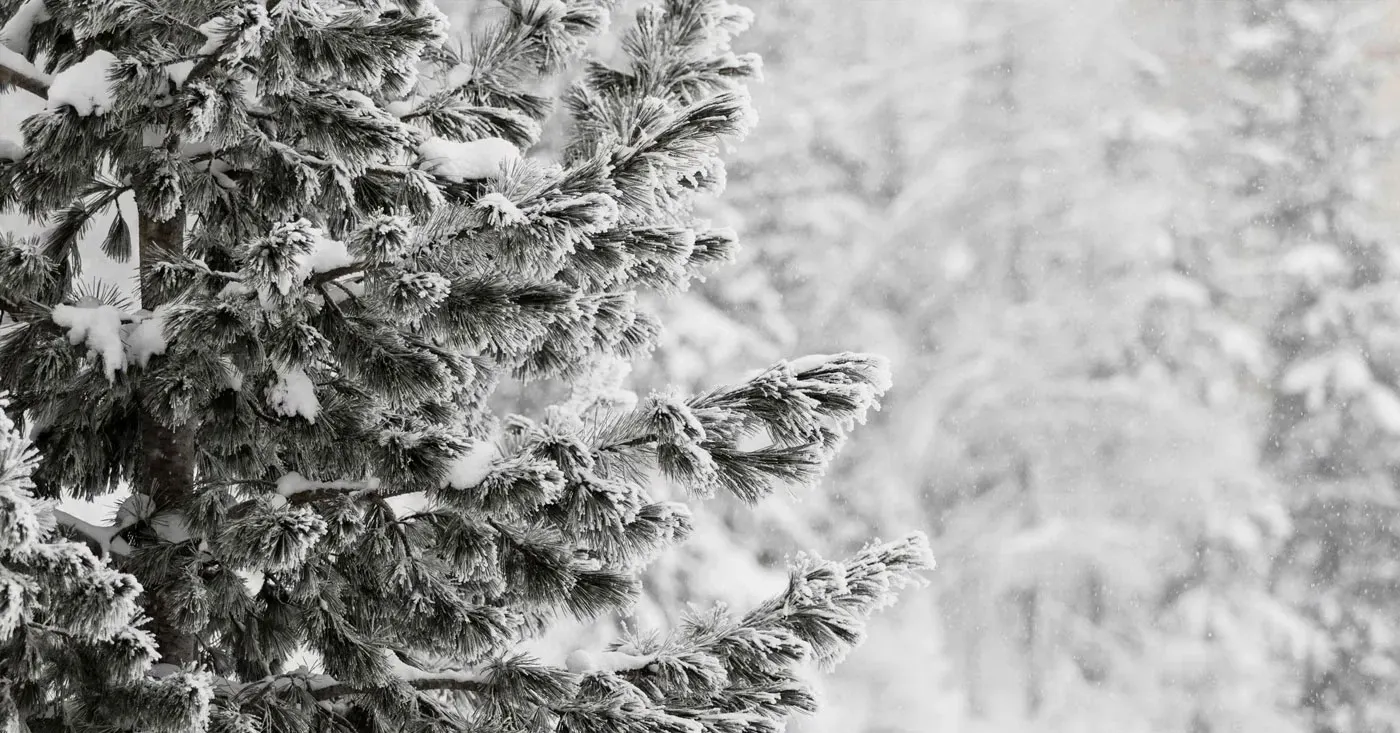How to Winter-proof Your Evergreen Landscape in Columbus Ohio
Jason Craycraft • May 1, 2023

New paragraph
New title
New paragraph
New title
New paragraph
New title
New paragraph
New title
New paragraph
New title
New paragraph
OMNI LEARNING CENTER
RECENT POSTS

As the leaves fall and temperatures drop, December marks the time to think about closing your pool for the winter season. Here at Omni Pools & Scapes, we understand that proper winterization is crucial for protecting your pool and ensuring it's ready for use come spring. Here's your step-by-step guide to shutting down your pool the right way: Why Winterize Your Pool? Winterizing your pool isn't just a tradition; it's essential for: Preventing Damage : Ice can expand and crack your pool's structure or equipment. Avoiding Algae and Bacteria : Cold weather doesn't kill all microorganisms, so proper chemical treatment is necessary. Maintaining Water Quality : Ensuring your pool water remains balanced during winter minimizes the effort needed to reopen it. Step-by-Step Winterization Process: Balance the Water Chemistry: Test for pH, alkalinity, calcium hardness, and chlorine levels. Adjust as necessary to keep your water in balance, which helps in preventing algae and scale during the off-season. Clean the Pool Thoroughly: Remove leaves, debris, and vacuum the pool to leave it clean. Brush the walls to dislodge any dirt or algae. Clean or backwash your filter to ensure it's not clogged with debris from the season. Lower the Water Level: For pools in colder climates like Ohio, lower the water level below the skimmer and return lines to prevent ice damage. However, for pools with an auto-cover, maintain a level that doesn't interfere with the cover's ability to seal. Drain and Store Equipment: Drain the pump, filter, heater, and any other equipment to protect from freezing temperatures. Follow manufacturer guidelines for storage. Remove and store ladders, diving boards, and other accessories in a dry place to prevent rust or damage. Add Winterizing Chemicals: Use a winterizing kit or add chemicals separately to prevent algae growth and maintain water clarity. This typically includes: Shock treatment to kill off any remaining algae and bacteria. Algaecide to prevent growth during winter. Sequestering agents to prevent staining from metals in the water. Install the Pool Cover: For above-ground pools, a solid cover is essential. For in-ground pools, mesh or solid covers can be used, depending on your preference for water management during winter. Ensure the cover is secure and tight to keep out debris and to minimize water accumulation on top. Circulate Water One Last Time: Run your pump with the winterizing chemicals to distribute them evenly. Then, shut down your system. Protect Against Freeze: Use pool antifreeze in skimmer and return lines to prevent freezing and damage. Consider a pool heater or invest in a freeze protection system if you live in an area with extreme cold snaps.

At Omni Pools & Scapes, we believe that the beauty of a well-designed pool area extends beyond the water itself. Hardscaping plays a pivotal role in defining the functionality and aesthetic appeal of your outdoor living space. Let's explore how to integrate hardscapes to elevate your backyard into a true outdoor masterpiece. What is Hardscaping? Hardscaping refers to the non-living features of your landscape, like pathways, patios , retaining walls , and outdoor kitchens . These elements provide structure, facilitate movement, and create focal points or areas for leisure and entertainment. The Role of Hardscaping in Pool Design Functional Aesthetics : Patios : A well-designed patio around your pool can serve as a deck for sunbathing , a dance floor for parties, or a dining area for al fresco meals. Choose materials that complement your pool's style, whether it's natural stone for a rustic feel or sleek concrete for modern elegance. Walkways : These guide guests around your pool safely while adding to the overall design. They can be made of pavers, gravel, or even wood, depending on the ambiance you wish to create. Defining Spaces : Outdoor Kitchens : Imagine walking from your pool to a fully functional kitchen area. Hardscaping here includes countertops, grills, and seating, turning your backyard into an entertainment zone. Fire Features : From fire pits to outdoor fireplaces , these elements not only extend your pool season into cooler months but also serve as a gathering spot for nighttime enjoyment. Water Management : Retaining Walls : Useful for managing water flow, preventing erosion, and creating multi-level landscapes that add depth and interest. Drainage Systems : Properly designed hardscapes can incorporate elegant solutions for water drainage, ensuring your pool area remains pristine and functional.

As you dive into the joy of pool ownership, maintaining the right water chemistry is crucial for ensuring your swimming experience is both safe and enjoyable. At Omni Pools & Scapes, we believe that knowledge is power, especially when it comes to the health of your pool. Here's an in-depth look at pool water chemistry to help you keep your pool in pristine condition. The Basics of Pool Chemistry pH Levels : The pH scale measures how acidic or basic your pool water is, with a range of 7.2 to 7.8 being ideal for human comfort and effective sanitation. Too low, and you risk corrosion and skin irritation; too high, and you might face issues with scale formation and reduced chlorine efficiency. Chlorine : This is your primary sanitizer, killing off bacteria, algae, and other pathogens. The recommended free chlorine level is between 1.0 and 3.0 ppm (parts per million). Chlorine levels need regular testing, especially after heavy use or weather events like rain. Additional Chemical Balancers Alkalinity : Total alkalinity acts as a buffer for pH, helping to keep it stable. Aim for 80-120 ppm. If alkalinity is off, pH swings can become frequent, making maintenance a challenge. Calcium Hardness : This affects the clarity of the water and the longevity of your pool's surfaces. The ideal range is 200 to 400 ppm. Too low, and water could become corrosive; too high, and you'll see scale buildup. Cyanuric Acid (Stabilizer) : This protects chlorine from being broken down by UV rays. Levels should be between 30 and 50 ppm. Without enough stabilizer, your chlorine will dissipate too quickly, especially in sunny areas like Columbus. Why Balancing is Essential Balanced water chemistry: Protects Your Investment : Prevents damage to pool walls, equipment, and surfaces. Ensures Swimmer Comfort : Reduces the risk of eye irritation, skin rash, and other discomforts. Keeps the Pool Clear : Balanced water results in a clearer, more inviting pool, free from cloudy water or algae blooms. Common Problems and Solutions Cloudy Water : Could be due to imbalanced pH, low sanitizer levels, or high calcium hardness. Test and adjust chemical levels accordingly. Green Water : Indicates algae growth, often resulting from low chlorine levels or inadequate circulation. Shock the pool with chlorine, clean filters, and possibly use an algaecide. Scale Formation : Occurs when calcium hardness and pH are too high. Use a scale inhibitor and adjust these levels. Testing and Maintenance Regular Testing : Use test strips or a liquid reagent test kit weekly, or after heavy use. Consider investing in a digital tester for more accurate readings over time. Chemical Adjustments : Adjust chemicals gradually; sudden changes can shock the system, leading to further imbalance. Circulation : Ensure your pool's filtration system runs enough to circulate all the water through the filter at least once per day. Professional Insight While DIY testing and maintenance are part of pool ownership, professional help can be invaluable: Seasonal Openings and Closings : Have Omni Pools & Scapes handle these critical times to ensure your pool starts and ends the season correctly. Regular Check-Ups : We can provide periodic professional analysis and maintenance, ensuring your pool chemistry remains balanced year-round. Conclusion Understanding and managing your pool's water chemistry is like being the conductor of an orchestra, where each element must harmonize for the perfect performance. It involves vigilance, knowledge, and sometimes professional assistance. At Omni Pools & Scapes, we're here to guide you through this process, ensuring your pool remains a clear, safe, and inviting oasis for all your summer activities. For more information or to schedule a professional pool service , visit us at www.omnipoolsandscapes.com . Keep the chemistry right, and your pool will be the gem of your backyard for years to come.

